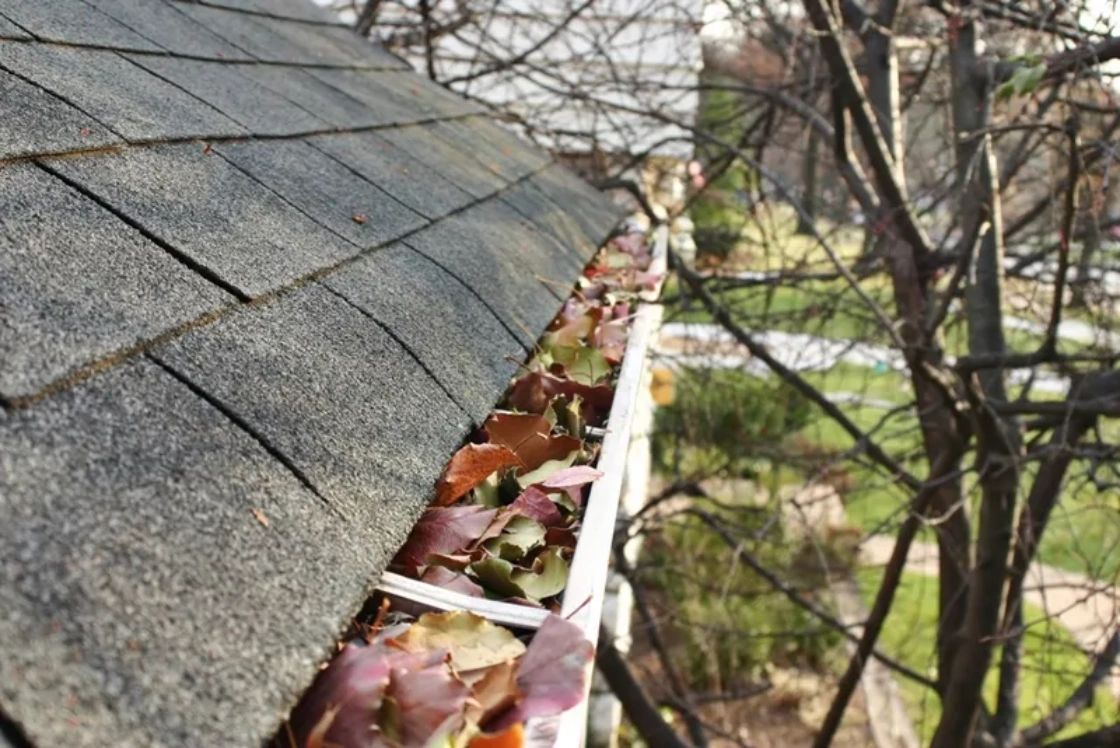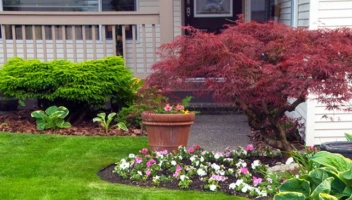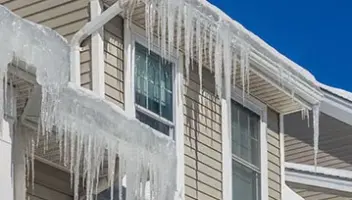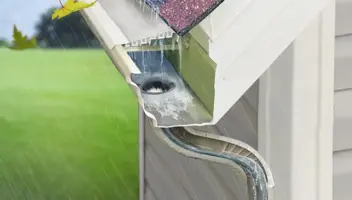Types of Gutters

When it comes to rain gutters, homeowners can choose from a wide variety. Residential gutters come in different shapes and sizes and can be manufactured using one of several different materials. Each option comes with its own pros and cons, like cost effectiveness, durability, and longevity. Different types of gutter systems may appeal to homeowners depending on the factors that are most important to them.
Shape
- “K” Shaped – “K” shaped rain gutters are commonly seen on more modern homes. When seen from the side, they look like the letter “K.” This type of house gutter may be more cost-effective due to its wide availability.
- Half Round – Half round house gutters were commonly used on historical homes, and may have more aesthetic appeal than the more modern “K” shaped gutters. The smooth shape on the inside may make for easier gutter cleaning, as there are fewer crevices for debris to get stuck in.
Material
- Plastic – Usually made of durable, long-lasting vinyl, plastic house gutters are a great, low-cost option for homeowners.
- Aluminum – Aluminum is one of the most common materials gutter systems are made of. They are rust-resistant and can be painted to match the color of your home. They’re also cost-efficient.
- Steel – Galvanized steel house gutter systems are the most economical solution for homeowners. Galvanized steel will hold up to heavy, falling debris (like small tree branches) and will last longer than other options. However, steel gutters must be coated with a protective sealant in order to be rust-resistant.
- Copper – Initially orange in color, copper guttering weathers to become a natural light green color (referred to as patina). Designs may also be stamped into the metal. For these reasons, copper is the most ornamental option for homeowners. It is said that copper guttering can last up to 100 years, which outperforms the other types of gutter systems.
- Wood – Wooden spouting looks attractive, but is not a good option for homeowners. It holds less water than the other types and requires much more maintenance. In addition to regular maintenance required of all gutters, wood requires yearly oiling, staining, and sealing as well. This can make wood spouting extremely expensive over time.
Other Features
- Size – Typically, residential gutter systems are 5 inches. Larger-sized gutters can hold more water. So, if you live in a rainy area, you may want to look into 6-inch gutter systems. However, larger gutters can also hold more snow and ice in the winter, which can cause the gutter system to pull away from the home. The average climate for your area should be the biggest deciding factor when choosing a size.
- Seamed or Seamless Gutters – Seamless gutters are the optimal choice. Over time, seamed gutter systems can wear down at the seams and leak. This is impossible with seamless gutters, which reduce the chances of roof leaks and foundation problems for the home. Seamless gutters also make gutter cleaning a little easier, as debris won’t build up around the welding.
- Downspouts and Downspout Extensions – Homeowners must take great care to properly divert water away from their foundation, which is why downspouts are essential. Water should be diverted at least 10 feet away from the base of the home. Downspout extensions can be helpful for these purposes.
Between shape, material, and other features, it may seem like homeowners have endless choices when it comes to types of gutters. Rain gutters are a long-term commitment, so it’s important to think about your individual priorities, such as cost, durability, and aesthetics before you make your final decision.
It’s also important to protect your gutter system from debris clogs. Instead of constantly cleaning your gutter system, let LeafFilter’s top-notch, patented gutter protection do the work for you.


